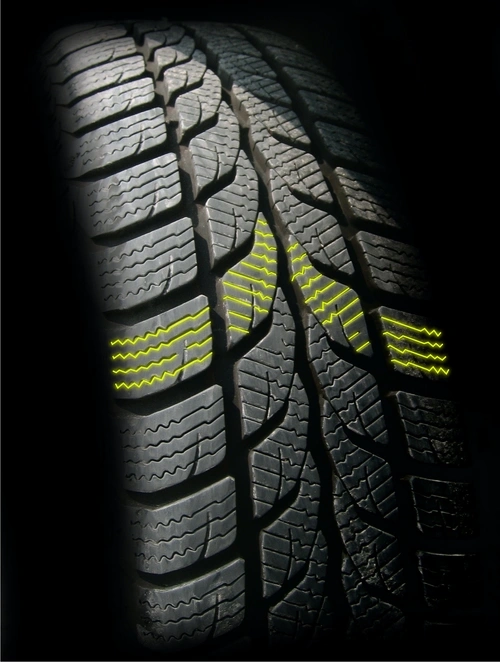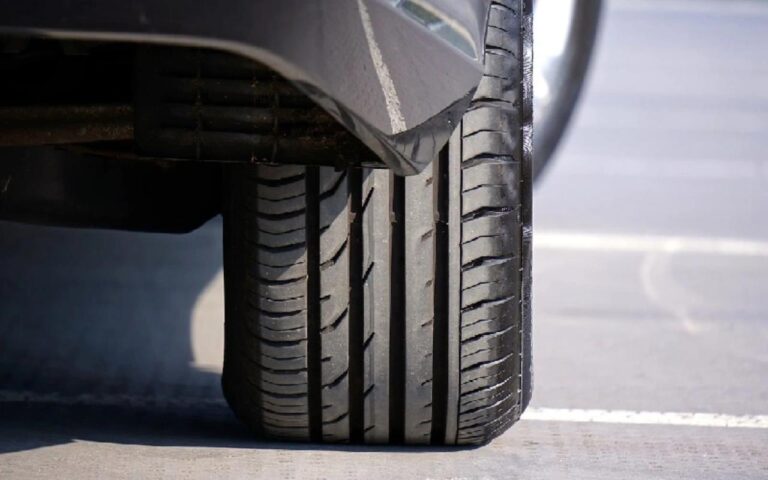Every tiny detail you see on a tire serves a particular purpose. Tire treads help you achieve a good grip on the road and allow you to accelerate safely. The sidewall provides stability and maintains the shape of the tire. What about the multiple sipes on a tire? What are tire sipes, and how do they work?
Sipes are the tiny cuts in your tire’s tread that assist your tire in achieving good traction in slippery, wet, and snowy road conditions.
These small slots are responsible for your tire’s good traction and braking performance over wet roads, snow, ice, and even mud. The word “sipe” originated in the 1920s. The term is the actual surname of the person who conceptualized and patented the innovation.
Read on because I will provide more information about the history of “sipes” and elaborate on how they work.
The Discovery of Sipes
According to online accounts, John Sipe discovers that cutting slits in the tread on the bottom of his shoes enhances traction. Sipe finds this while working in a slaughterhouse for a long time and facing slippery floors daily.
This man, hailed from Pennsylvania, USA, has successfully patented cutting slits on the tire’s treads to improve traction. This patent became widely known to the tire industry, and tire manufacturers embraced it.
Sipes then can be considered an eponym. It is to name the innovation after John Sipe.
What Are Tire Sipes?
Sipes on tires are the small slits added to the existing tread lugs, the part of the tread pattern that raises from the tire’s body.

In the tire tread pattern anatomy, tread lugs make up most of the tire’s contact patch. In other words, these are the parts of the tread that mainly touch the road.
To improve the traction of a tire, tire manufacturers adopted the siping technology to their products. The number of sipes applied to a particular tire varies. Winter tires are known to feature thousands of sipes to aid the tire in providing reliable traction.
It is not only winter tires that feature sipes. Some types of tires like summer tires, all-season tires, and off-road tires also feature several sipes to help them run smoothly on wet or slippery pavements.
Read our review on excellent tires for off-road driving: Mastercraft Courser MXT Review
Benefits of Siped Tires
I would assume that you already have an idea of the function of tire sipes at this point. Tire sipes exist to obtain an extra solid grip and enhanced road traction.
If you are frequently traversing wintry road conditions, installing tires with heavy siping is an advantage. Tires with multiple sipes are proven to provide more reliable traction than those that don’t. Check out your regular winter tires, and you will see thousands of sipes on their treads.
How do sipes help improve traction? The mechanism is simple: They help push moisture or water out from underneath the tire. As a result, the tire will have a better grip on the road.
Siped tires help your car achieve a short braking distance in these inclement road conditions like snow, slush, rain. Additionally, they provide added safety as they assist your vehicle in avoiding instances of hydroplaning.
Siping Differences on Different Types of Tires
As previously mentioned, different types of tires feature different numbers of sipes. Take a look at the general siping differences of the most commonly used tires.
Summer Tire Siping
Summer tires do not feature many sipes. They don’t need to have these many sipes as the tire can generate traction with the rubber-to-road contact. You don’t experience a lot of slippery or wet roads during summer.
Another reason why summer tires don’t feature many sipes is that multiple sipes may generate more pressure between the road surface and the tire contact patch.
Read our review of superb summer tires here: Falken Azenis FK510
Winter Tires Siping
Winter tires have the highest density of sipes. These sipes act as biting edges to provide a firmer surface grip and more reliable traction. These sipes work well on wet, ice, and snow-covered terrains.
The idea of siping came about because of these challenging road conditions. Thus, winter tires feature the most number of sipes compared to other types of tires.
All-Season Tire Siping
All-season tires need to deliver a bit of winter performance. In saying so, they also feature a high density of sipes but not as dense as the sipes on winter tires.
All-season tires boast enhanced grip and traction on wet and wintry roads. This performance is because of the strategically positioned sipes that serve as biting edges and improve the overall tire controllability. The zig-zag-formed sipes on Michelin’s X Tour A/S T+H tires can be a perfect example of this siping type.
Off-Road Tire Siping
You won’t believe it, but off-road tires or mud tires do feature some sipes as well. The small slits you will find on these tires are not highly detailed, but their purpose is the same: to improve grip on off-road terrains.
Aftermarket Tire Siping
Some vehicle owners or drivers consider adding sipes to their tires after they buy them from the market. The process involves cutting additional slits into the tire’s footprint for the apparent reasons of shortening braking distance and improving traction.
It sounds like a good move. However, doing this to your tires will give you some disadvantages. Mechanic siping of tires will void the tire warranty that comes with your tire during purchase.
Manufacturers have conducted research and have studied the number of sipes to add to a tire, so there is no need to modify it upon purchase. Doing this modification may also affect the overall performance of the tire.
Tire owners usually go to a shop to re-sipe their tires as the tread wears out. If this is the reason, it might be worth it, but you will be compromising your tire’s tread warranty.
If you decide to get this done on your tires, make sure to find a reputable shop that will do the job. Avoid going to unknown shops that will do more damage to your tires.
The cost to add sipes to your tires varies from one shop to another. Depending on the required job, it can start for as low as $15 but can increase up to $50.
Conclusion
Tire siping is an important innovation that helps drivers to have a safer ride. Tire sipes are the small slits on the tire’s treads that assist the tire in providing a solid road grip and more reliable traction.
These sipes further provide the tire short braking distance and more controllability.
The term “sipes” is an eponym for John Sipe, the person who discovered the innovation.

